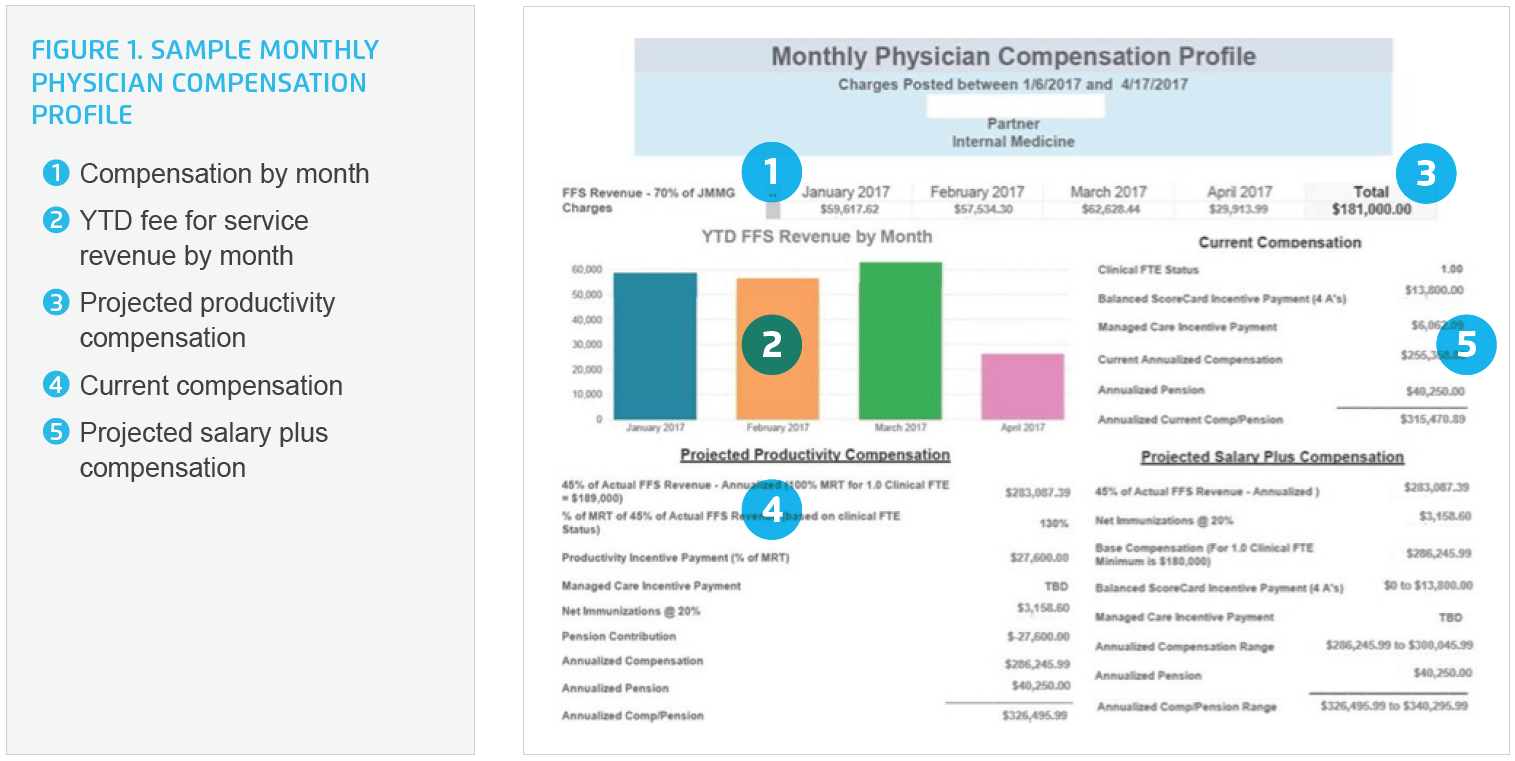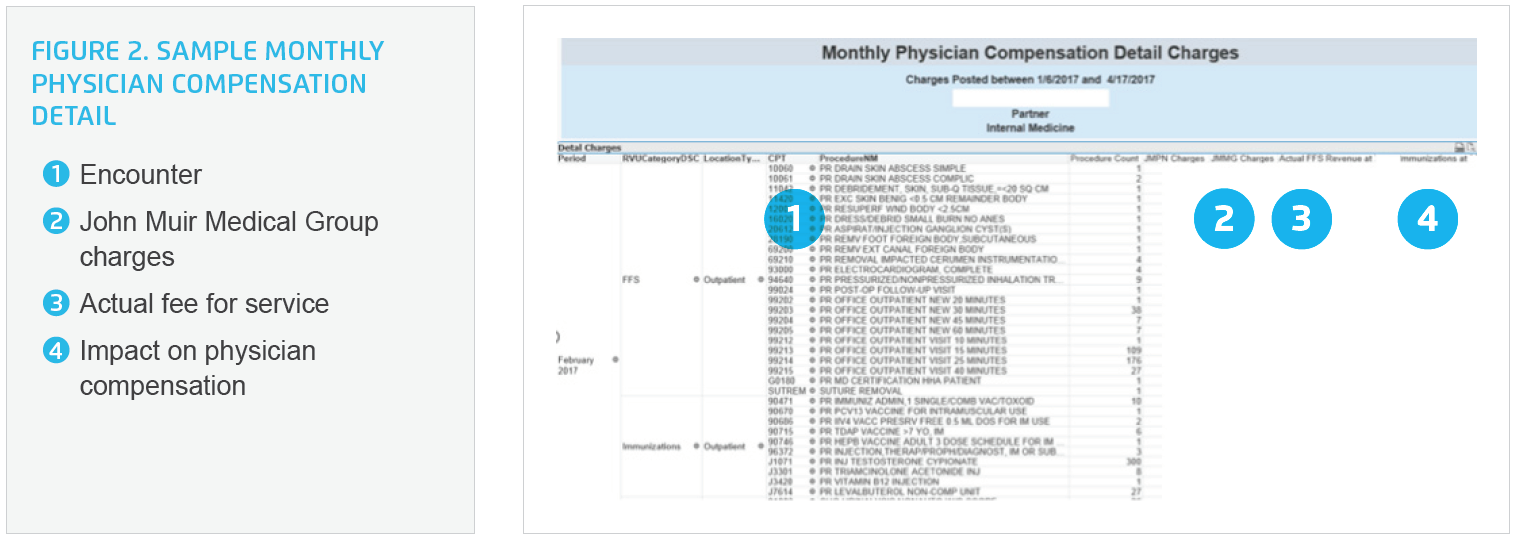Healthcare reimbursement is shifting from fee-for-service to value-based models, requiring organizations to revise physician compensation strategies. John Muir Health aimed to streamline its complex compensation process by utilizing its analytics platform, enhancing efficiency and transparency while automating processes.
Healthcare reimbursement continues to shift away from fee-for-service reimbursement models to value-based, risk-sharing agreements. This shift has resulted in organizations revising compensation strategies to engage physicians in value-based compensation arrangements. An effective value-based physician compensation plan is critically important, particularly in competitive environments where organizations must optimize the ability to recruit and retain highly skilled providers.1,2 One commonly used physician compensation approach includes a base salary and productivity incentives, coupled with additional compensation opportunities for achieving quality and service goals.3 The physician compensation package at John Muir Health is not only competitive, it is also complex, but the support process was burdensome, inefficient, and lacked transparency.
John Muir Health developed a plan to leverage the Health Catalyst® Analytics Platform, including the Late-Binding™ Data Warehouse and broad suite of analytics applications, to develop an automated process for physician compensation. Physician compensation experts, business leaders, and data analysts worked together to develop a shared understanding of the various physician compensation scenarios. The analysts, along with data architects, used the analytics platform to fully automate calculating physician compensation, making the compensation process transparent for both physicians and leaders.
The plan created efficiencies in time and effort across multiple domains and produced software to automate future work.
The ability to recruit and retain highly skilled providers is critical to health systems’ success, especially in competitive environments. As healthcare reimbursement continues to move to value-based reimbursement, many organizations face challenges in designing a meaningful, transparent physician compensation strategy that supports moving away from productivity-based compensation. While productivity is still a part of physician compensation plans, numerous healthcare organizations are adjusting physician compensation models to include performance goals intended to incentivize practices that improve population health and patient engagement, and lower per capita costs.4 A physician compensation approach commonly used includes a base salary and productivity incentives, coupled with additional compensation opportunities for achieving quality and service goals.
John Muir Health, a not-for-profit integrated system of doctors, hospitals and outpatient centers that offer a full-range of medical services, is a healthcare leader in the San Francisco Bay Area. The John Muir Medical Group is comprised of more than 300 primary care physicians, physician assistants, and nurse practitioners. It includes pediatricians, family practitioners, and internal medicine physicians who provide primary care services to John Muir Health patients.
John Muir Health has a reputation for high-quality care and has long understood that to provide excellent care, it needs to attract and retain excellent providers. To support that endeavor, John Muir Health has a competitive compensation package, including a minimum guaranteed salary and additional compensation opportunities for those who meet various goals. While the compensation package is competitive, it is also complex. For example, the process and tools that supported the program were onerous and lacked transparency.
The process was also largely manual. Experts in the compensation model spent weeks working with report writers, attempting to gather the necessary data to determine the appropriate compensation. Often, the data in the reports was incorrect or inconsistent. Teams spent substantial time reviewing and comparing report data to the source data. At times, they could identify the source of the data discrepancies, but then had to invest additional time making corrections. Other times, they were aware of incorrect data, but could not identify the root cause.
This process did not meet physician needs because they could not review, project, or understand their compensation. They received compensation information once a year with no visibility into which additional compensation opportunities they achieved, nor could they see how the criteria for additional goals factored into their compensation.
With the limitations of the old system, when providers had questions about their compensation, the physician compensation team took weeks, if not months, to provide details, and were often unable to provide any information at all.
John Muir Health needed a change. It needed to provide their physicians the detailed information they wanted and needed, and needed to ensure its physician compensation model was transparent, reliable, sustainable, and supported by a stable system.
Leveraging its analytics platform, John Muir Health set out to develop an automated process for value-based physician compensation.
There were three objectives:
To meet the desired objectives, physician compensation experts, business leaders, and data analysts worked together to develop a shared understanding of the various physician compensation scenarios and the data needed for each role involved in the compensation process.
Data analysts and data architects utilized the analytics platform to fully automate calculating physician compensation, which made the compensation process transparent for both physicians and leaders.
The physician compensation application provides complete transparency into each physician’s compensation. The data can be trended by month and physicians can compare their current performance to previous months and years. The physician compensation application also supported forecasting and displayed projected salary rates (using current performance data) to determine the physician’s current compensation, projected productivity compensation, and projected salary plus compensation (see Figure 1).

To further improve transparency, the monthly physician compensation detail helped providers review their individual charges associated with each encounter and included the impact of that encounter on the physician’s compensation (see Figure 2).

Additional detailed reports were available for each aspect of the physician compensation to ensure complete transparency.
The new physician compensation model provided welcome changes in the form of a transparent, reliable, sustainable, and stable system.
“Our physicians are much happier with this improved process. They now have access to all the information they need to understand and monitor their compensation.”
– Janelle Anderson, Program Manager, Support and Business Services, John Muir Health
Having met the business goals for value-based physician compensation, data architects and analysts are now available to contribute to other high-priority organizational needs.
1. Adamopoulos, H. (2013). 5 Best practices for developing value-based physician compensation structures. Becker’s Hospital Review.
2, 4. Floyd, P. (2014). Roadmap for physician compensation in a value-based world. BDC Advisors.
3. Greenfield, W. R. (1998). In search of an effective physician compensation formula. Family Practice Management. 5(9):50-57.




